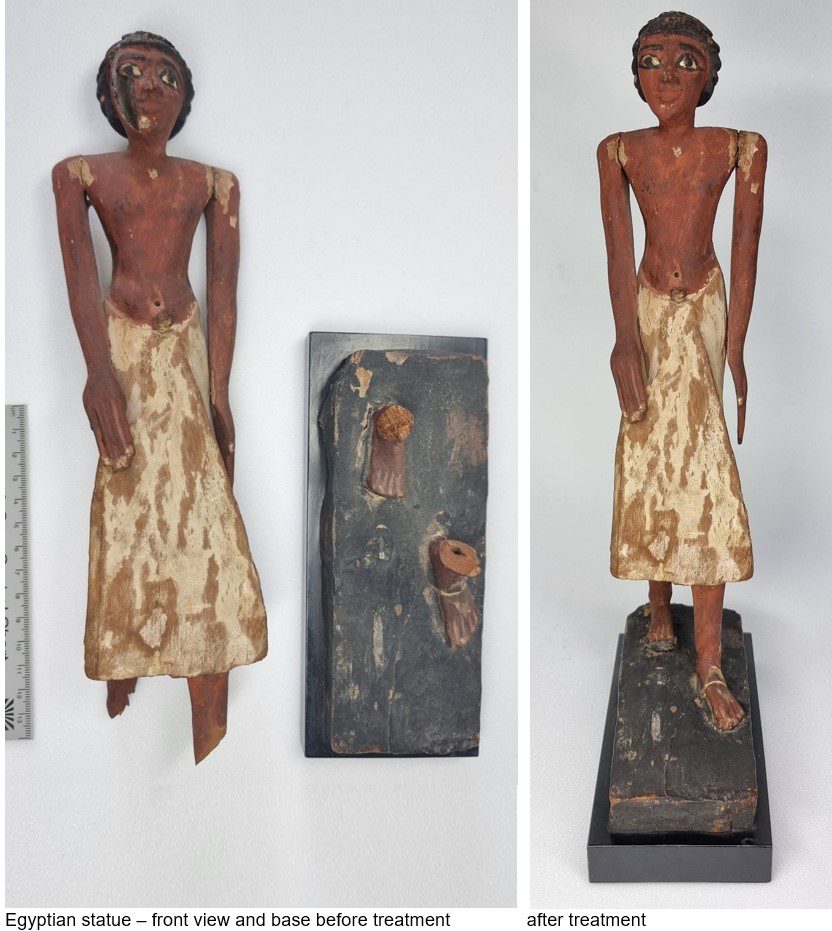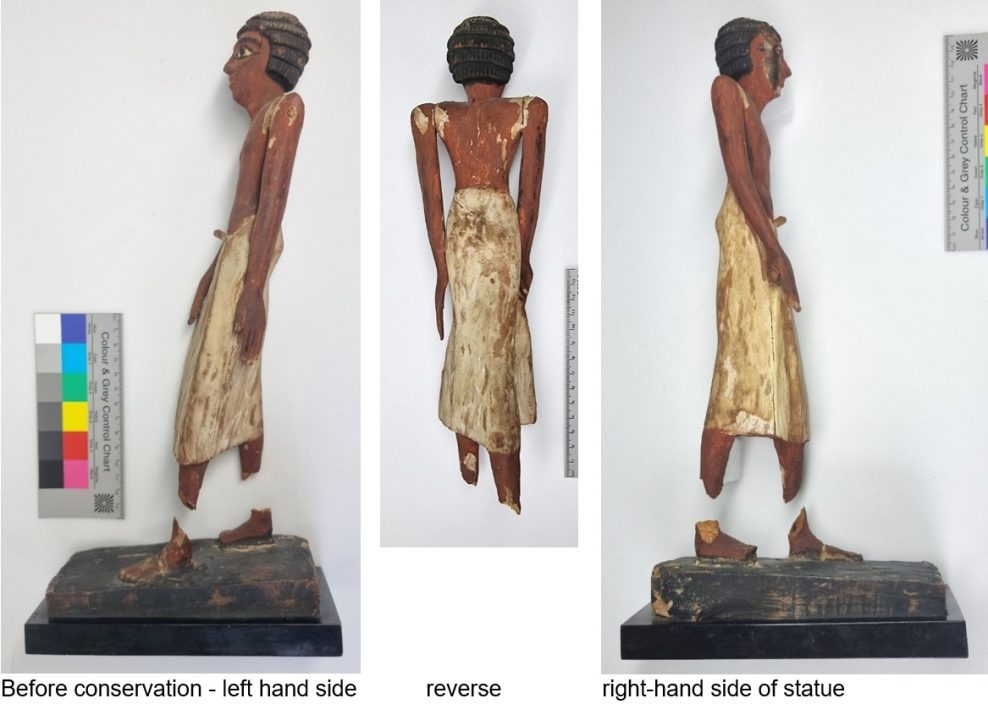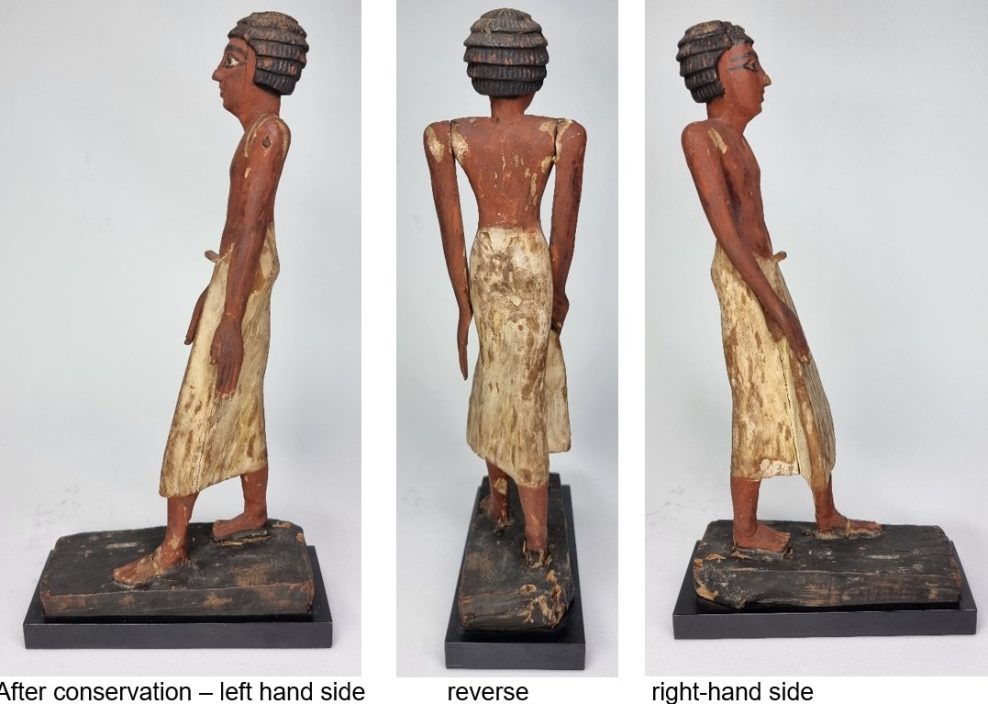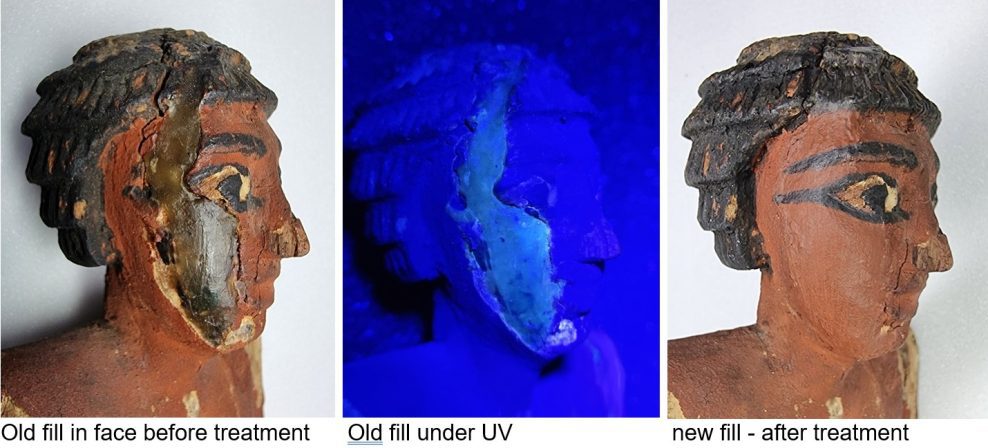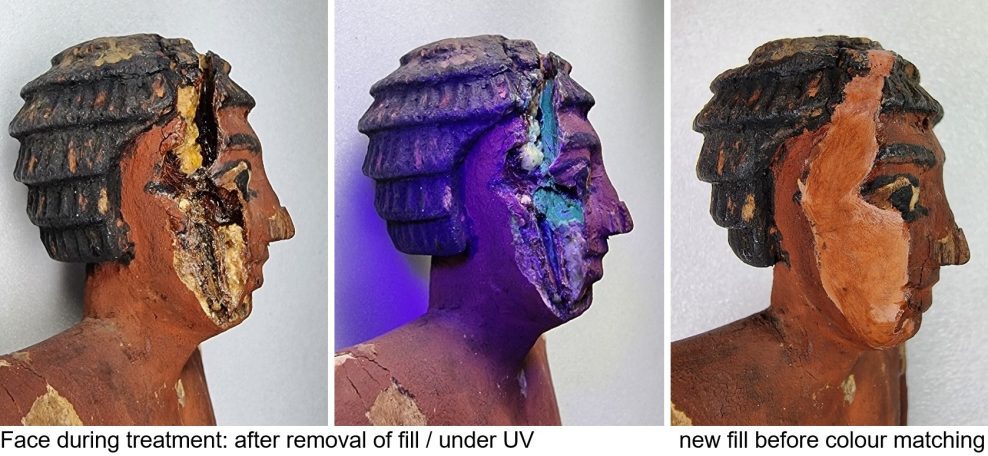Projects
Conservation of Ancient Egyptian sculpture
Polychrome wooden sculpture of an official, from Ancient Egypt, Middle Kingdom, 12th Dynasty.
The sculpture had broken in half in the area of the legs. Additionally, the paint layer and gesso was partially loose and a large wax fill in the right hand side of the face has aged and cracks started to appear along the fill.
In discussion with the client its was decided to undertake a stabilisation treatment but also to remove and replace the aged fill.
Examination
Before treatment the sculpture was examined under UV to identify old restorations. Besides the large wax fill in the face there was no further repair noticeable.
Further investigation of the break edges in the legs revealed some information about the damage. The crack and separation in the left leg is an older damage, highly likely caused by tension in the wood, pulling on both legs. After the left leg broke, the tension was released, resulting in a gap between the break edges. The sculpture was now only standing on one leg. An impact damage cause the break in the right leg.
Treatment
All surfaces were dry cleaned and loose paint and gesso consolidated.
Then, the wax fill was carefully removed. During this process it was noticeable that the adjacent original material was very fragile and started to deteriorate. Further consolidation was undertaken whilst removing the wax fill. The radial crack, which led to the ‘area of loss’ was much larger and deeper than expected (see image). The new filling material is slightly softer and can react to movements in the wood. the fill was colour matched to reduce its visual appearance.
The sculpture was re-attached with acrylic based adhesive. The gaps resulting from the previous tension in the wood were filled and colour matched to reduce their visual appearance.
